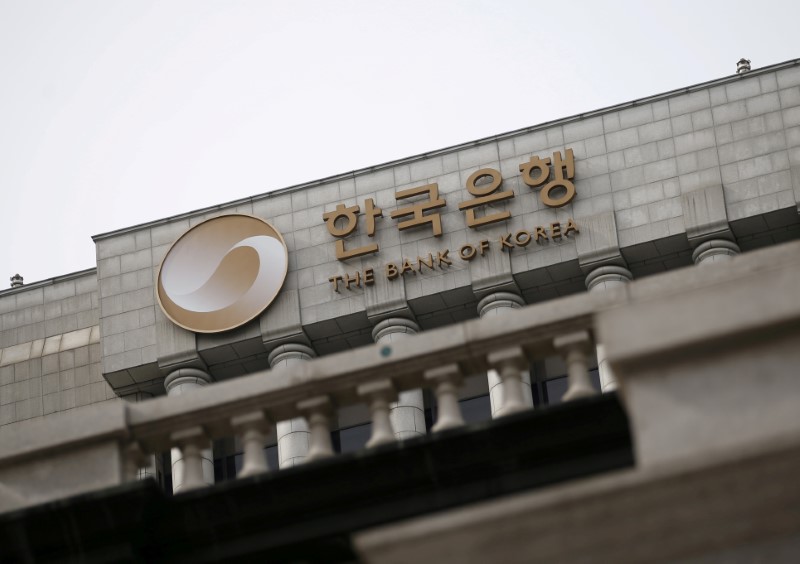 © Reuters. FILE PHOTO – The logo of the Bank of Korea is seen on the top of its building in Seoul
© Reuters. FILE PHOTO – The logo of the Bank of Korea is seen on the top of its building in SeoulSEOUL (Reuters) – South Korea’s central bank needs to more closely monitor financial stability and capital outflows as the spread between the nation’s benchmark interest rate and its U.S. counterpart widens, a bank board member said on Wednesday.
“The negative interest rate differential (between the U.S. and South Korea) could be in place for a long time or even widen further,” Bank of Korea board member Koh Seung-beom told reporters at a news conference in Seoul.
Factoring in currency market volatility “has become more important” in monetary policy considerations due to the higher risk of capital outflows, Koh said.
With the U.S. federal funds rate at 1.75 percent to 2 percent range, above South Korea’s 1.5 percent benchmark policy rate, economists have been warning of capital outflow risks in Asia’s fourth largest economy as investors seek higher yields in the U.S.
And the interest rate differential is set to widen further, with the Fed signaling another two rate hikes by year end.
On July 12, the BOK held its base rate steady but one board member voted to raise interest rates, which increased expectations for a rate hike in coming months as major peers tighten monetary policy.
Fusion Media or anyone involved with Fusion Media will not accept any liability for loss or damage as a result of reliance on the information including data, quotes, charts and buy/sell signals contained within this website. Please be fully informed regarding the risks and costs associated with trading the financial markets, it is one of the riskiest investment forms possible.
Source: Investing.com




























